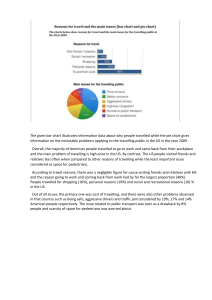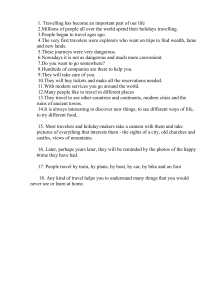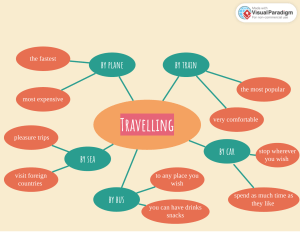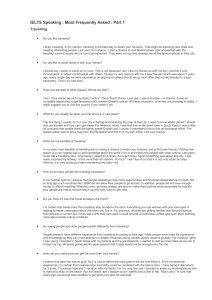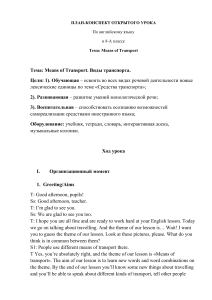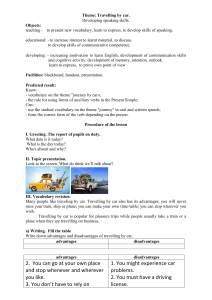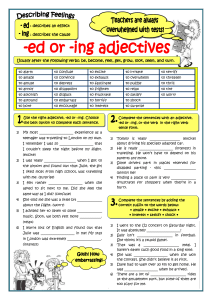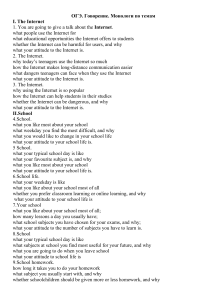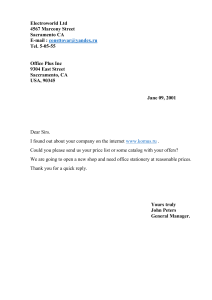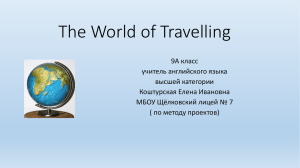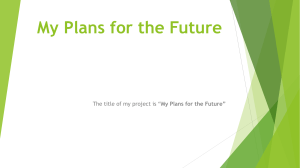Theme: *The process of Globalisation in the world*
реклама
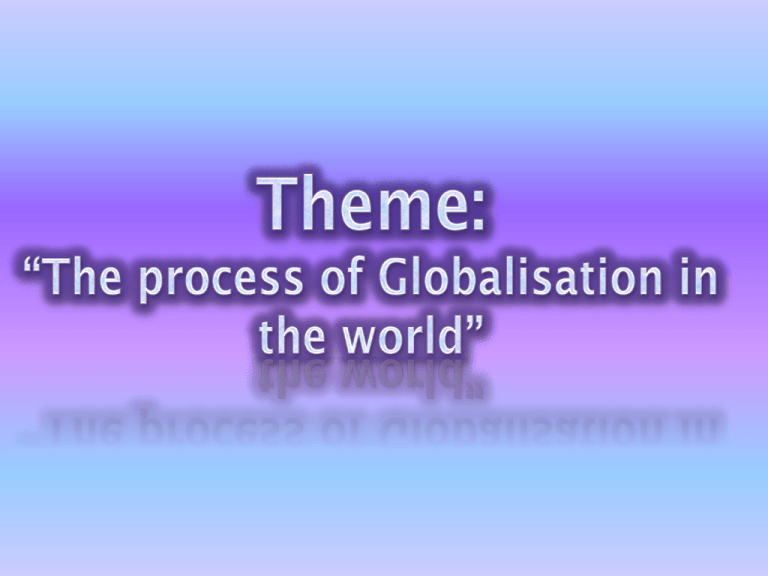
The past The present In the 19th century, it took weeks or even months to get from one continent to another. Only wealthy people could afford travelling long distances. Ordinary people saved money for travelling for many years. Now it takes 24 hours to travel from Europe to Australia. A lot of people travel nowadays on business and as tourists. Even travelling by air is quite affordable. The only means of distant communication was the post. People enjoyed writing letters, but they had to wait for a very long time to get reply. Very important letters sometimes got lost. When a group of people from different cities or countries wanted to discuss a problem and work out a common decision. They usually chose a place for the meeting and travelled there. They had to leave their homes and put off their business for a long while. Besides post, telephone, and telegraph, there are cheap and very efficient means of communication based on the Internet. It takes seconds to send an e-mail and get a reply. Satellite communication is used a lot now and teleconferencing is a common way of doing business or even discussing scientific and political problems. To take part in a teleconference, people need only to switch on the monitor at the right time. In the 16th and 17th centuries about seven million people spoke English. Nowadays about 1,5 billion people speak English and only 427 million of them are native speakers. People of different cultures, business and science from all over the world use English for communication. Seventy-five percent of the world's e-mails and 78% of all websites are in English Globalisation Travelling long distances The appearance of the Internet; Satellite communication Spread of English as the global language
